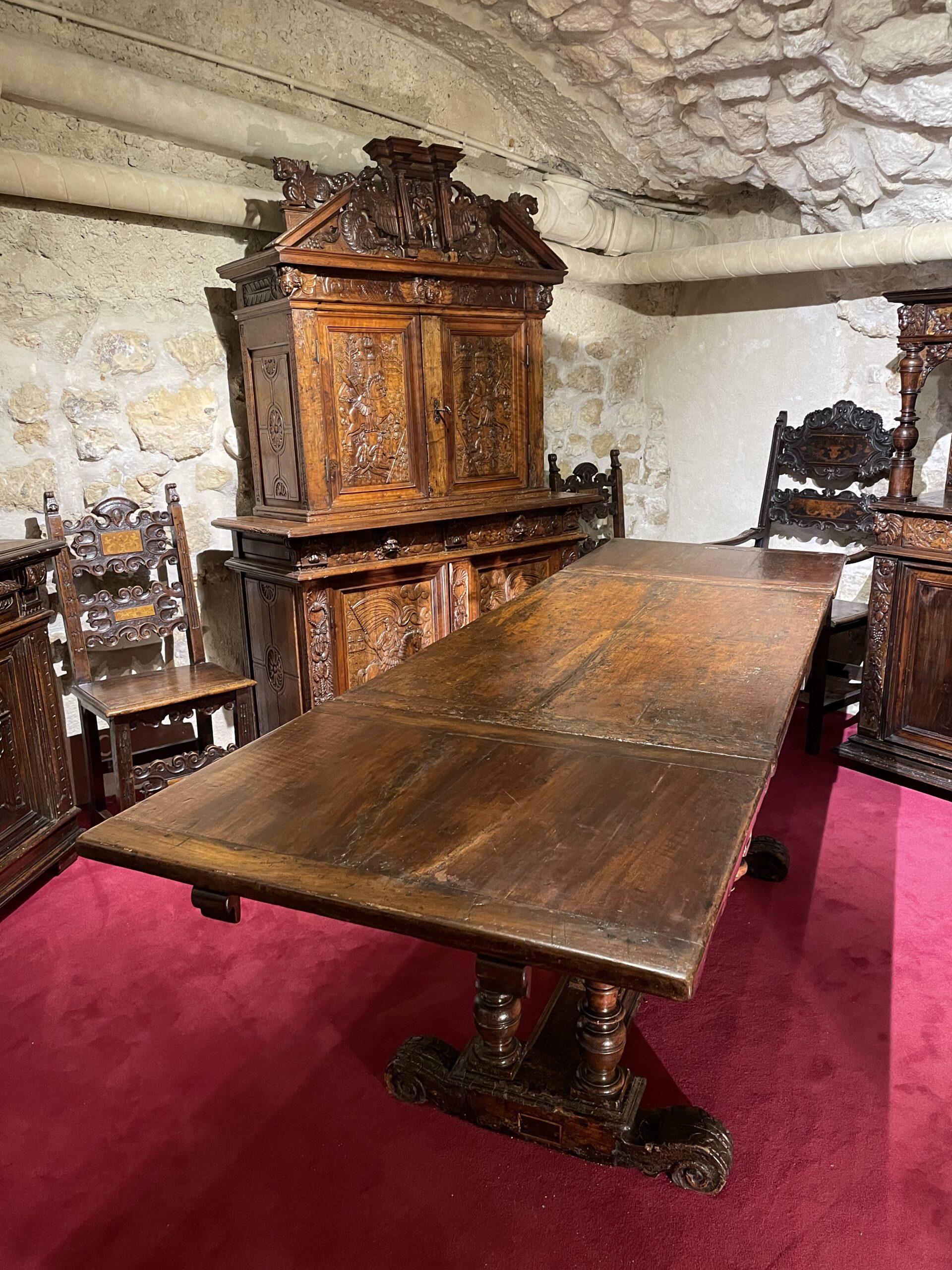Description
Beautiful table of the Second French Renaissance, said ‘à la du Cerceau’. It is in effect a model close to the projects designed and published by Androuet du Cerceau in the mid-sixteenth century to brings architecture to the pieces of furniture.
It belongs to this stylistic trend which was born in Ile de France, in the Loire Valley and in the region of Lyon, where the composition received classical inspirations, always harmonious and restrained in reaction to the ultramontane style which then predominated in other regions .
With a design more sober than the fan-tables, from Lyon or Burgundy, this highly elegant table can be used as a state-table as well as for meals. It has seven feet connected by three central columns.
Accordingly with the tradition of the second half of the 16th century, the solid masses are arranged into two parallel horizontal plans. At the base of the furniture, thick skates adorned with foliated foliage are connected by a large strut. The top presents a double thicknes with the extensions and rests on a belt as large as the skates. Three other balusters rise from the sleeper and holds the structure. The table has at each end of its top a set of leaves said ‘à l’italienne’ sliding to double the length.
The height of the top reaching 86.5 cm is another characteristic confirming its authenticity.
If the design of this table is attributed without certainty to Jacques Androuet du Cerceau, it is certain that it does not copy any Italian model. The rigor of its composition, the balance of its mass and the scrupulous use of the ancient art attest that this table is a French creation of the second half of the sixteenth century. Mentioned of these tables are found as early as in 1560 in the accounts and inventories.
This table with a sober and elegant decoration is a fine example of the general line and new discoveries established during the Renaissance, especially in France where the decoration remained more restrained than in Italy. Independently of its design, the structure and the assembly of this beautiful table are characteristic of this period. Its fine proportions, its aesthetic power and its decorative treatment allow us to precise its provenance to Loire valley.
Bibliography
Le mobilier domestique, Nicole de Reynier au CNMH
Le mobilier français du Moyen-Age à la Renaissance, J. Boccador



















